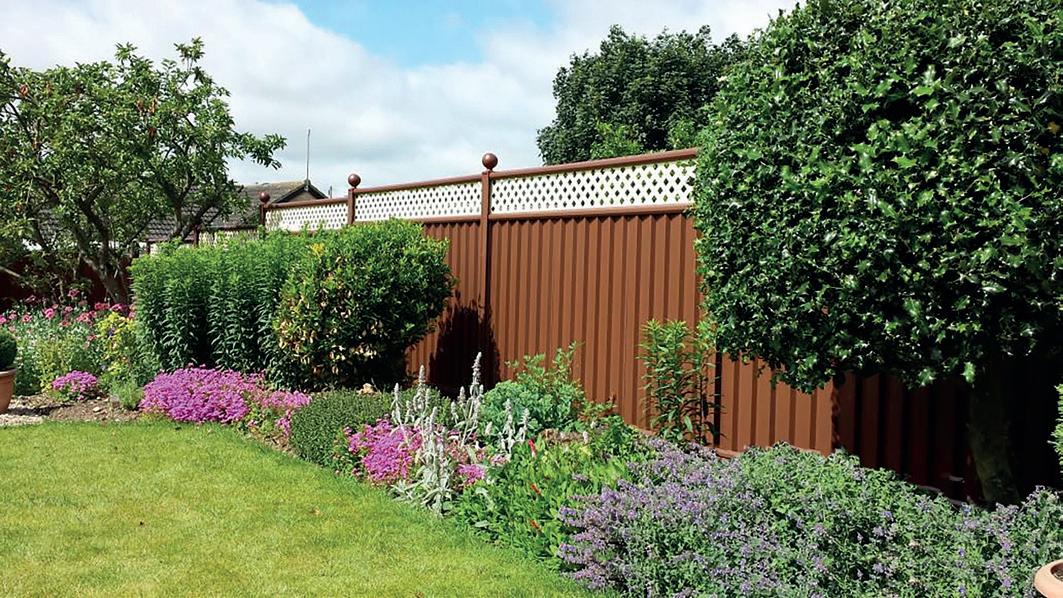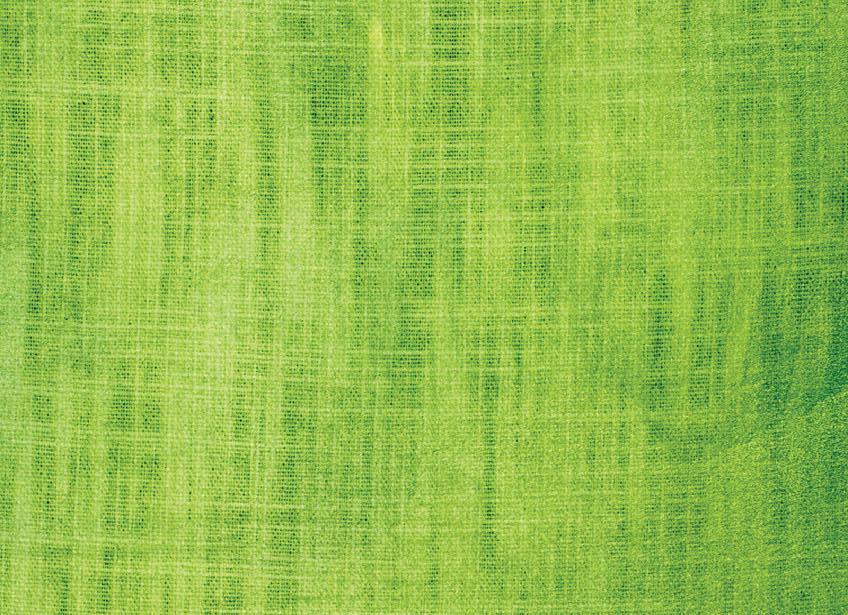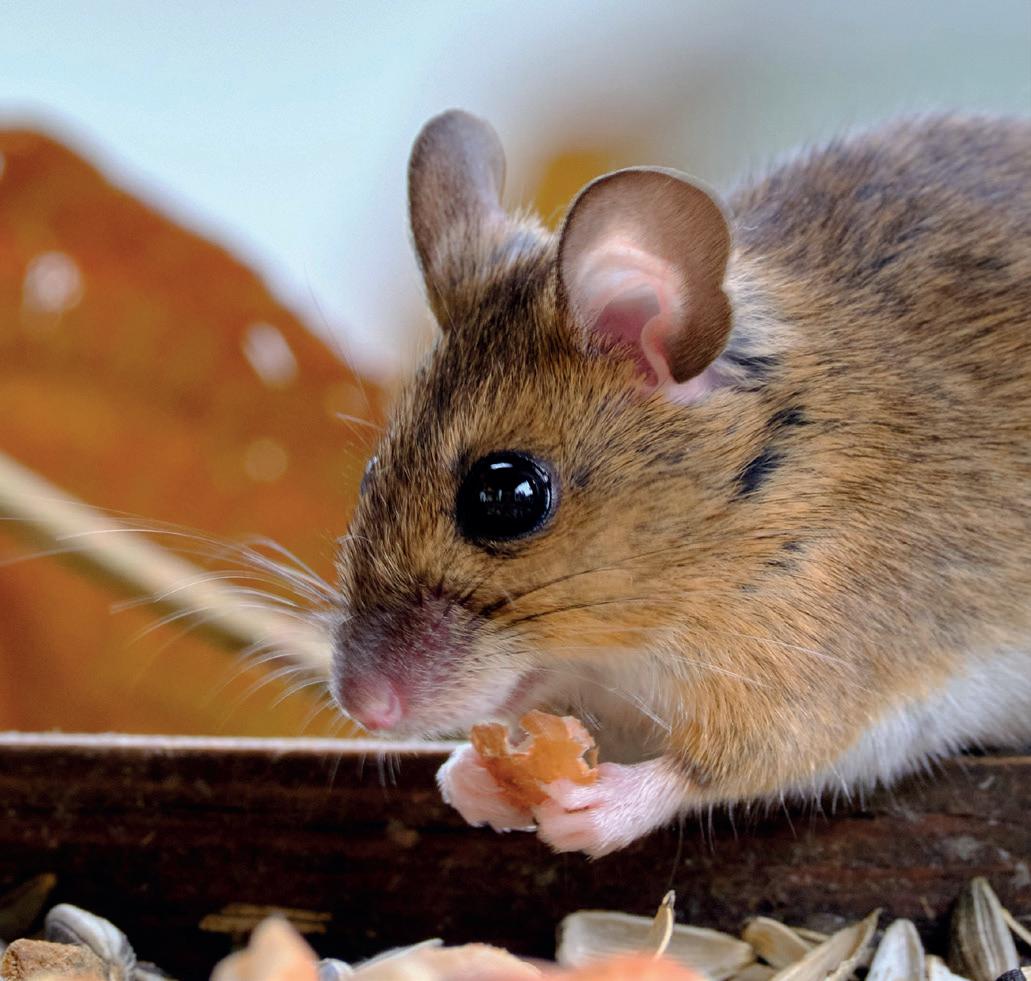
10 minute read
GARDENING
DISCOVER THE BENEFITS OF OUTDOOR LIVING IN THE WINTER
By Liv Sabat
Advertisement
There are so many benefits of spending time outdoors in the winter. Let’s talk about some of them:
• Vitamin D – despite lack of sunshine, there is still enough daylight to reach daily intake for most people, depending upon how long you are outdoors. • Increased creativity and concentration – by just taking a stroll outside you can experience fundamental improvements in brain function and mental focus.
• Avoiding ‘indoor’ germs – spending more time outside will assist the development of a strong immune system. • Exercise – we all need a minimum of half an hour exercise a day. Now let’s talk some statistics. More than six in 10 people spend less than 15 minutes a day outside during winter and 1 in 10 do not spend any time at all outside during winter. The main reasons given for all the hours spent indoors are poor winter weather conditions and work. Unfortunately these are reasons we can’t change, but we can help create a space that will help you spend more time outdoors, benefiting you with a healthier lifestyle. Our glass rooms and garden rooms will keep you safe from any and all weather conditions that come your way. With customisations and accessories, you can make sure you’re just as comfortable under your glass room as you are in your home. Add a heater and sliding glass doors and you’ll keep the chill of winter out without having to lift a finger – all while still getting to enjoy the fresh air. Glass rooms are a perfect place to store and use fitness equipment, meaning you can exercise at home rather than going on that run after a long day at work. We all know how dark it gets in the winter so by the time we get home from work it’s already pitch black. You can add LED spotlights to your garden room, allowing you to exercise after work and still feel that crisp air. You can also opt to include RGB strip lights which allow you to create more of an atmosphere. If you’re working from home this can be the perfect space for your office. Just think, what if you could spend time outside at work, whilst working, having a meeting, on your lunch break? The opportunities are endless because there are so many options to take into account: sliding glass doors, radiant heaters, LED spotlights, just to name a few. Glass rooms and garden rooms allow you to enjoy the indoor comfort of home whilst you’re outdoors, with the added advantage of getting to enjoy healthy fresh air. Enjoy your winter to the fullest whilst remaining as safe and healthy as possible! Thank you for reading, see you next month!





UP THE GARDEN PATH
By Julie Haylock, Sandhurst Garden Design
Who said that January was a quiet time of year for us gardeners? From ordering seeds in catalogues to looking through those little bits of paper with scribbled notes of plant names you want to buy this year, there is still plenty to keep us busy.
If you are planning a garden design project for the new year, then now is the perfect time to make a start, so why not book a garden design consultation to discuss your ideas. Visit my website at www.sandhurstgardendesign.co.uk for more information and to view my portfolio and testimonials.
This month I am going to focus on two great plants you could include in your garden borders, heuchera and tiarella, both members of the Saxifragaceae family and native to the woodlands of North America.
Heuchera, or Coral Bells, form a neat and compact mound about 40cm high and are mostly evergreen. These hardy and versatile plants are perfect grown at the front of the border between taller plants or in containers, providing that the drainage is good. Depending on the variety, they are happy in sun or light shade and produce a white, pink, or red flower on long slender stems in summer.
The deeply lobbed leaves of heucheras can be plain, marbled, or veined, and offer a vibrant choice of colours from green, pink, and purple to zingy lime, so there really is one to suit everyone’s taste.
There are over four hundred different varieties of heuchera, most varieties prefer to be planted in light or dappled shade, but the darker leaf varieties such as Obsidian or Plum Pudding with its gorgeous maroon foliage can take more sun.

In autumn tidy up the leaves and add a generous amount of mulch around the plant to protect the plant from frost heaving. This is when the soil around the plant freezes pushing it out of the ground exposing the roots.
Tiarella cordifolia or Foam Flower – my favourite variety is ‘Spring Symphony’ but ‘Sugar and Spice’ is just as nice! These perennials form a clump about 30cm high and have deeply lobbed almost palmate-shaped green leaves marked with dark purple veins.
Tiarella produce upright stems of small star-shaped creamy white flowers which open to pale pink flowers in late spring early summer. Like heucheras, they prefer moist well-drained soil and look great planted in drifts as ground cover for best effect in the woodland garden with hardy ferns and hostas.
THE CHURCH MOUSE
Under the pulpit lives the church mouse, All he needs is within god’s house. One of many taking refuge there, He hears the vicar’s boots upon the stairs. He stays out of sight when worshipers are about, When all is quiet and dark, he ventures out.
Amongst the pews he investigates an open hymn book, ‘All Things Bright and Beautiful’ gets an approving look. Along old radiator pipes and under vestry door, By the tea trolley, biscuit crumbs galore. He does not need asking twice, A delicious treat for the church mice!
The mouse knows the church calendar year, Harvest Festival, the one he holds most dear. Weddings, christenings, funerals come and go, The organ played with enthusiastic gusto. The church mouse now asleep feeling sublime, Having enjoyed a sip or two of spilt communal wine!

This plant dies back to below ground level in autumn before fresh new growth appears in spring, so apply a thick layer of mulch to protect the crown from frost.
Until next time
Sandhurst Garden Design
Julie Haylock
Garden Designer
20 Sandhurst Road, Yeovil, Somerset BA20 2LG
Tel: 07899 710168 Email: juliesandhurst1@gmail.com www.sandhurstgardendesign.co.uk
Andrew Haylock

LOOKING BACK AT SHERBORNE’S CASTLE GARDENS
By Mike Burks, managing director of The Gardens Group and chairman of the Garden Centre Association
Castle Gardens will celebrate its 35th birthday in 2022. We officially opened the doors on 7 April 1987 but we had been working on the site from 12 February of that year.
It was a very cold winter and snow lay on the ground for a good deal of the time in the first few weeks but there was much to do clearing what was a very overgrown site that had lain derelict in most part for a good number of years.
As we cleared the site, we discovered lots of fallen down cold frames, greenhouse bases and also whole buildings that we weren’t aware of until we cleared away the ivy! This included the original toilet which was where the toilet block is now. It had a cast-iron raised cistern and the most comfortable wooden seat, and our new toilet block also has raised cisterns and wooden seats as homage to the originals!
Castle Gardens was the walled kitchen garden to Sherborne Castle and was built during Capability Brown’s redesigning of the grounds of the castle in the eighteenth century. The vast majority of the walls are brick but the section which forms part of the Butterfly House is made of stone. These are reputed to be what remains of Sir Walter Raleigh’s Pineapple House. For those dubious about the dates, it seems that Christopher Columbus first brought the pineapple back to England in the late fifteenth century which makes it possible that Sir Walter had a pineapple. However, hot houses for such fruit probably were built somewhat later so this may not be true!
Only two of the original greenhouses still had some glass in them when we moved in and with a bit of a tidy up we were able to use these for some growing in the first year. However, they weren’t hugely safe and so we took the glass out of them with a view to renovating at some stage. This pipe dream eventually came to pass as our good friend Dave Cuff from F Cuff and Sons painstakingly rebuilt the structure for us in 2012, exactly as it had been, even with the panes of curved glass. The second of these greenhouses has been moved to the front of the restaurant where a greenhouse had been originally and will be used as part of the restaurant when it’s finished in the next few weeks.
Around the site there are still reminders of what the site used to be. Along the walls, if one looks carefully, are thousands of nails used for training plants. Every now and then a label can be found naming a longgone variety of pear or apple that used to adorn the walls.
Below the ground, just a few inches down in some cases, are the old pathways and then, a bit deeper, are tunnels carrying the pipes that formed the heating system for the old greenhouses. Even deeper are water channels and tanks for rainwater collection from the roofs. We have also found and carefully retained three large brick-lined wells, all with water in the bottom still.
The buildings which now form our shop were summer stables. Gentry visiting Sherborne for the summer housed their horses in the building. When we arrived this was in disrepair and Sherborne Castle Estates renovated it beautifully so that we had use of the facility from August 1987.
We built the main greenhouses ourselves. This was no mean feat as the kit was delivered on a large articulated lorry and came with no instructions. We got it built though and on time despite a hurricane that took the roof off halfway through its construction!
In the early days we had just the one till which sat in the greenhouse and it was fairly basic with just four department buttons! Mind you, we only had five members of staff! end with bothies (accommodation for gardeners) at the other. The fireplaces are still in situ. We also have met the niece of one of the gardeners who remembers calling in to see her uncle who lived in the end bothy in the 1940s!
So, what in gardening has changed since 1987? Well, in vogue in 1987 were conifers, winter heathers, red, white and blue bedding plants, peat-based composts and pesticides! In vogue now is wildlife gardening, gardening in pots, peat-free composts, houseplants, growing your own fruit and vegetables, and organic peats and disease control.
So much has changed but what hasn’t is the love of gardening. And with the impact of the last two years, gardening has been shown to be more important than ever as a route to keeping healthy, both mentally and physically, and also has huge benefits for the environment.
CASTLE GARDENS
New Road, Sherborne DT9 5NR
Tel: 01935 814633
BRIMSMORE GARDENS
Tintinhull Road, Yeovil BA21 3NU
Tel: 01935 411000
POUNDBURY GARDENS
Peverell Avenue, Poundbury DT1 3RT
Tel: 01305 257250 www.thegardensgroup.co.uk





